Home>diy>Building & Construction>What Is Planning In Construction


Building & Construction
What Is Planning In Construction
Modified: January 24, 2024
Learn about the importance of planning in building construction and how it plays a vital role in ensuring successful and efficient project execution. Gain insights into effective strategies and best practices for effective construction planning.
(Many of the links in this article redirect to a specific reviewed product. Your purchase of these products through affiliate links helps to generate commission for Storables.com, at no extra cost. Learn more)
Introduction
Welcome to the world of construction planning, where every successful building project begins. Planning in construction is a crucial step that lays the foundation for a well-executed project, ensuring efficiency, quality, and cost-effectiveness. Whether it’s a residential home or a large-scale commercial development, effective planning is essential to ensure the project’s success.
Construction planning can be described as a systematic approach to determining the objectives, methodologies, and resources required for the successful completion of a construction project. It involves the careful consideration of various factors such as site conditions, materials, labor, and timelines. A well-designed construction plan acts as a roadmap, guiding the project from conception to completion.
In this article, we will delve into the definition of planning in construction, explore its importance, discuss key components of a construction planning process, and highlight the benefits of effective construction planning. We will also address the challenges that can arise during the planning phase and examine the tools and techniques used to overcome them. Finally, we will showcase some case studies of successful construction planning and provide best practices for effective planning.
But before we delve into the details, let’s take a moment to understand why planning is so essential in construction projects.
Key Takeaways:
- Effective construction planning is crucial for successful projects, ensuring efficiency, cost control, risk management, and client satisfaction. It involves clear objectives, thorough analysis, resource allocation, and collaboration.
- Utilizing tools like BIM, project management software, and risk assessment tools, along with best practices such as defining clear objectives, engaging stakeholders, and monitoring progress, enhances construction planning. This leads to successful project outcomes, improved communication, and efficient resource allocation.
Read more: What Is A Construction Plan
Definition of Planning in Construction
Planning in construction refers to the process of analyzing, organizing, and coordinating all the necessary elements to efficiently execute a construction project. It involves determining the project objectives, estimating the required resources, and creating a detailed strategy to meet those objectives within the specified timeframe and budget.
At its core, construction planning is about creating a roadmap for success. It involves carefully considering all aspects of the project, from the initial design phase to the final construction stage, to ensure that each step is executed smoothly and in the most optimal way possible.
A well-defined construction plan outlines the project’s scope, identifies the tasks and activities involved, allocates resources, defines timelines, and establishes a communication framework. It serves as a guide for all stakeholders involved, including architects, engineers, contractors, and subcontractors, allowing them to work in harmony towards a common goal.
Construction planning encompasses various key elements, including:
- Project Scope: Defining the project’s objectives, goals, and constraints, and determining what needs to be accomplished.
- Resource Allocation: Identifying the necessary resources, such as labor, materials, equipment, and finances, and allocating them efficiently.
- Scheduling: Creating a timeline that outlines the sequence of activities, milestones, and deadlines for completing each phase of the project.
- Risk Management: Identifying potential risks and developing strategies to mitigate them, ensuring a smooth project implementation.
- Quality Control: Implementing measures to ensure that the project meets the required standards and specifications.
- Communication and Collaboration: Establishing effective channels of communication and promoting collaboration among all parties involved in the project.
By considering these elements and incorporating them into the planning process, construction professionals can address potential issues, manage resources efficiently, and minimize risks, leading to a successful project outcome.
Now that we understand the definition of planning in construction, let’s explore why it holds such critical importance in construction projects.
Importance of Planning in Construction Projects
Planning is a fundamental aspect of any construction project, regardless of its size or complexity. It sets the stage for success by providing a clear roadmap and ensuring that all necessary resources are available at the right time. Here are some key reasons why planning is crucial in construction projects:
- Efficiency and Productivity: Proper planning allows for the efficient allocation of resources, including labor, materials, and equipment. By mapping out the project timeline and identifying critical tasks, teams can work in a coordinated and synchronized manner, maximizing productivity and minimizing delays.
- Cost Control: Construction projects are heavily influenced by costs. Through effective planning, project managers can estimate budgets accurately, control expenses, and avoid unnecessary spending. By identifying potential cost-saving opportunities and avoiding rework, planning helps to optimize the project’s financial performance.
- Risk Management: Construction projects come with inherent risks, such as weather conditions, design flaws, and unforeseen challenges. Through careful planning, risks can be identified in advance, and mitigation strategies can be implemented. This proactive approach minimizes potential disruptions, ensures worker safety, and protects the project’s overall timeline and budget.
- Quality Assurance: Planning allows for thorough consideration of quality control measures throughout every phase of the construction project. By defining quality standards, implementing inspections, and ensuring adherence to specifications, planning helps deliver a final product that meets or exceeds client expectations.
- Effective Communication and Collaboration: Construction projects involve numerous stakeholders, including architects, engineers, subcontractors, and suppliers. Planning enables effective communication and collaboration among all parties, ensuring that everyone is on the same page and working towards a common goal. Clear communication channels, regular progress meetings, and shared documentation facilitate a smooth flow of information and foster teamwork.
- Timely Project Completion: A well-planned construction project ensures that tasks and activities are sequenced in a logical order, leading to timely completion. By setting realistic deadlines and milestones, anticipating potential delays, and having contingency plans in place, planning increases the likelihood of finishing the project within the agreed-upon timeframe.
Overall, planning is the backbone of a successful construction project. It provides a structured approach, enabling teams to work efficiently, control costs, manage risks, ensure quality, and achieve project objectives. Without proper planning, projects can face delays, cost overruns, and ineffective resource utilization. Therefore, investing time and effort in the planning phase is essential for achieving project success.
Now that we understand the importance of planning in construction projects, let’s explore the key components involved in the construction planning process.
Key Components of a Construction Planning Process
The construction planning process involves several key components that are essential for successful project execution. Understanding and implementing these components is crucial for effective planning and ensuring a smooth construction project. Let’s explore the key components in detail:
- Project Goals and Objectives: Clearly defining the project goals and objectives is the foundation of the planning process. This includes identifying the purpose of the project, client requirements, and desired outcomes. Setting goals that are specific, measurable, achievable, relevant, and time-bound (SMART) helps align all stakeholders towards a common vision.
- Site Analysis: Before initiating the construction planning process, a thorough analysis of the project site is necessary. This involves evaluating factors such as topography, soil conditions, environmental impact, and infrastructure accessibility. Understanding the site constraints and opportunities helps in making informed decisions during the planning phase.
- Scope Definition: Defining the scope of the project involves determining the work to be done, the deliverables, and the required resources. This includes identifying the project’s boundaries, objectives, and constraints. A clear scope definition ensures that all parties involved have a shared understanding of the project’s extent and prevents scope creep during execution.
- Work Breakdown Structure (WBS): Breaking down the project into smaller, manageable tasks is essential for better planning and resource allocation. The WBS organizes the project into hierarchical levels, from major project phases to individual activities. It helps identify dependencies, sequence tasks, assign responsibilities, and estimate the required resources and duration for each task.
- Resource Allocation: Efficient resource allocation is crucial for successful project implementation. This involves identifying the required labor, materials, equipment, and finances. Resource allocation further includes determining the optimal utilization of resources, scheduling their availability, and considering factors such as skill levels, availability, and cost-effectiveness.
- Timeline and Scheduling: Developing a well-defined timeline and schedule is vital for effective construction planning. This involves creating a detailed project schedule, outlining the chronological sequence of activities, setting realistic timelines for each task, and considering dependencies between tasks. Gantt charts and critical path analysis are commonly used tools in scheduling construction projects.
- Risk Analysis and Mitigation: Identifying potential risks and developing strategies to minimize or mitigate them is a crucial component of construction planning. This entails conducting a thorough risk analysis, assessing the likelihood and impact of risks, and developing contingency plans. By proactively addressing potential risks, construction teams can avoid disruptions, delays, and cost overruns.
- Communication and Collaboration: Effective communication and collaboration among project stakeholders are essential for successful planning and execution. Establishing clear communication channels, conducting regular meetings, and utilizing project management software tools facilitate information sharing, decision-making, and problem-solving. Collaboration ensures that all parties are aligned, leading to better project outcomes.
- Monitoring and Control: The construction planning process must include mechanisms for monitoring progress and controlling deviations from the plan. Regular monitoring allows project managers to track project performance, identify potential issues, and take corrective actions in a timely manner. This includes tracking milestones, updating schedules, and ensuring that the project stays on track.
By incorporating these key components into the construction planning process, project teams can lay a solid foundation for a successful project. Each component contributes to the overall effectiveness and efficiency of planning, ensuring that construction projects are executed smoothly, within budget, and on schedule.
Now that we have explored the key components of the construction planning process, let’s examine the benefits of effective construction planning.
Benefits of Effective Construction Planning
Effective construction planning plays a pivotal role in the success of any construction project. It brings numerous benefits that extend beyond just meeting project objectives. Let’s explore some of the key benefits of effective construction planning:
- Improved Project Efficiency: Effective planning ensures the efficient utilization of resources, including labor, materials, and equipment. By defining clear project goals, breaking down tasks, and establishing realistic timelines, construction teams can streamline workflows and eliminate unnecessary delays and inefficiencies. This results in improved overall project efficiency.
- Cost Control and Budget Management: Through effective planning, project managers can accurately estimate the required resources and budget for each phase of the project. This enables better cost control, as potential expenses can be anticipated and budgeted for in advance. By identifying cost-saving opportunities and minimizing wastage, effective construction planning helps keep projects within budget.
- Enhanced Risk Management: Proper planning allows construction teams to identify potential risks and develop appropriate risk mitigation strategies. By proactively addressing risks, such as design flaws, construction delays, or unforeseen challenges, teams can minimize disruptions and prevent costly rework. Effective risk management contributes to smoother project execution and ensures the overall success of the project.
- Quality Assurance: Planning ensures that quality control measures are integrated throughout the construction process. By defining and implementing quality standards, conducting regular inspections, and adhering to industry regulations, projects can deliver high-quality outcomes. Effective planning keeps the focus on quality, leading to increased client satisfaction and a positive reputation for the construction company.
- Improved Communication and Collaboration: Construction planning promotes effective communication and collaboration among all project stakeholders. By establishing clear communication channels, conducting regular progress meetings, and sharing project updates, teams can work together seamlessly. Enhanced communication facilitates coordinated efforts, prevents misunderstandings, and fosters a collaborative environment that contributes to project success.
- Timely Project Completion: Effective planning ensures that projects are completed within the agreed-upon timelines. Through the development of a detailed project schedule, including critical milestones and tasks, delays can be minimized, and potential bottlenecks can be identified in advance. This allows teams to proactively address any issues, ensuring that the project progresses as per schedule and is delivered on time.
- Client Satisfaction: Effective construction planning ultimately leads to increased client satisfaction. By delivering projects on time, within budget, and to the expected quality standards, construction companies build trust and rapport with their clients. Satisfied clients are more likely to engage in repeat business or provide positive referrals, contributing to business growth and success.
- Long-Term Project Success: Effective construction planning sets the stage for long-term project success. By establishing a strong foundation from the beginning, projects have a higher chance of meeting their objectives, avoiding costly mistakes, and ensuring stakeholder satisfaction. This success not only impacts the current project but also establishes a reputation for delivering quality work, attracting future clients, and fostering business growth.
Effective construction planning is about proactively managing all aspects of a construction project, from resources to timelines to risks. By realizing the benefits outlined above, construction companies can set themselves up for success and establish a competitive edge in the industry.
Now that we have discussed the benefits of effective construction planning, let’s take a closer look at the challenges that can arise in the planning process.
When planning in construction, it’s important to consider all aspects of the project, including budget, timeline, and resources. Utilize project management tools to help keep track of all the moving parts and ensure a successful outcome.
Read more: What Are Construction Plans Called
Challenges in Construction Planning
While construction planning is crucial for project success, it is not without its challenges. Construction projects are complex, and various factors can present challenges during the planning phase. Understanding these challenges is essential for construction professionals to overcome them effectively. Let’s explore some common challenges faced in construction planning:
- Inaccurate or Insufficient Information: Limited or inaccurate information can pose a challenge in the planning phase. Incomplete or outdated project data can lead to inaccurate estimates, inadequate resource allocation, and scheduling conflicts. Construction teams must invest time in gathering comprehensive and reliable information to ensure effective planning.
- Unclear Project Objectives: When project objectives are not clearly defined, it becomes challenging to create an accurate and realistic construction plan. Ambiguous or changing project goals can lead to scope creep, confusion, and conflicts among stakeholders. Establishing clear and agreed-upon project objectives from the outset is vital for effective planning.
- Unplanned Scope Changes: Often, during the planning phase, unforeseen changes in project scope occur. Changes in design requirements, client requests, or regulatory updates can lead to adjustments in the construction plan. Managing scope changes effectively is crucial to avoid disruptions, delays, and budget overruns. Regular communication and change management protocols are necessary to address scope changes efficiently.
- Resource Constraints and Availability: Limited resources or difficulties in procuring required materials, labor, or equipment can hinder the planning process. Inaccurate estimation of resource requirements can lead to resource shortages, productivity delays, or increased project costs. Construction professionals must carefully assess resource availability, plan for contingencies, and establish reliable supply chain management strategies to mitigate these challenges.
- Time Constraints and Schedule Pressure: Construction projects often face tight timelines and schedule pressures. Balancing the need for timely delivery with the complexity of construction tasks can be challenging. Failure to meet project deadlines can lead to financial penalties, strained client relationships, and reputational damage. Effective time management, realistic scheduling, and regular monitoring are essential to mitigate schedule-related challenges.
- Risk and Safety Considerations: Construction projects involve numerous risks, including worker safety hazards, weather conditions, and unforeseen site challenges. Identifying and managing project risks is fundamental to successful planning, but it can be a challenge. Effectively addressing risk and safety considerations requires proactive planning, adherence to safety protocols, and ongoing vigilance throughout the construction process.
- Communication and Collaboration Issues: Construction projects involve multiple stakeholders, each with their own priorities and perspectives. Communication barriers and coordination challenges can arise, leading to delays, misunderstandings, and conflicts. Ensuring effective communication channels, regular project updates, and collaborative efforts are vital to overcome these challenges and maintain project synergy.
- Technological Limitations: While technology has greatly advanced construction practices, there can still be limitations in implementing and utilizing certain tools and software. Compatibility issues, learning curves, and lack of technical expertise can impede the effective use of technology in planning. Construction teams must invest in suitable technologies, provide adequate training, and overcome any technical limitations to fully leverage their benefits.
Overcoming these challenges requires proactive management, effective communication, and a flexible mindset. By anticipating potential challenges and developing appropriate strategies, construction professionals can mitigate their impact and ensure successful project planning. The next step is to explore the tools and techniques available for construction planning, which can help tackle these challenges effectively.
Now that we’ve covered the challenges in construction planning, let’s explore the tools and techniques that can aid in the planning process.
Tools and Techniques for Construction Planning
The construction industry has seen a significant evolution in recent years, with the emergence of various tools and techniques to enhance the construction planning process. These tools and techniques offer construction professionals the means to streamline planning, improve efficiency, and overcome challenges. Let’s explore some of the commonly used tools and techniques for construction planning:
- Building Information Modeling (BIM): BIM is a powerful 3D modeling technology that enables visualization, collaboration, and coordination in the construction planning process. It allows for the creation of a virtual representation of the project, incorporating data about the structure, systems, and materials. BIM helps identify clashes, optimize designs, and improve decision-making during planning, resulting in better project outcomes.
- Project Management Software: Project management software provides a comprehensive platform for planning, scheduling, and collaboration. These tools allow construction teams to create and manage project schedules, allocate resources, track progress, and communicate effectively with stakeholders. Popular project management software includes Primavera P6, Microsoft Project, and Procore.
- Gantt Charts: Gantt charts are visual representations that depict project schedules, tasks, and timelines. They help in organizing and tracking project activities and dependencies, allowing for effective resource allocation and schedule management. Gantt charts provide a clear overview of the construction plan, enabling teams to prioritize tasks and monitor progress.
- Critical Path Method (CPM): CPM is a mathematical technique used to determine the longest sequence of tasks in a construction project. It helps identify the critical path, which represents the activities that must be completed on time for the project to stay on schedule. CPM helps project managers allocate resources, manage dependencies, and identify potential bottlenecks or delays.
- Project Risk Assessment Tools: Risk assessment tools help identify and evaluate potential risks and uncertainties in the construction planning process. Quantitative and qualitative risk analysis techniques, such as Monte Carlo simulations and decision trees, can be employed to assess the likelihood and impact of risks. These tools aid in developing risk mitigation strategies and contingency plans.
- Cost Estimation Software: Cost estimation software assists in accurately estimating project costs and developing budgets for construction projects. These tools take into account labor, materials, equipment, and other project-specific factors to provide reliable cost estimates. Some popular cost estimation software options include RSMeans, ProEst, and CostX.
- Collaboration and Communication Tools: Effective collaboration and communication tools facilitate seamless information exchange and coordination among project stakeholders. File-sharing platforms, instant messaging apps, and online project management platforms help teams collaborate in real-time, share documents, and track project progress. Examples include Microsoft Teams, Slack, and Basecamp.
- Virtual Reality (VR) and Augmented Reality (AR): VR and AR technologies are increasingly being used in construction planning to enhance visualization and simulations. These immersive technologies allow stakeholders to experience the project design in a virtual environment, enabling better decision-making and identification of design issues. VR and AR provide a more realistic understanding of the construction plan, reducing errors and facilitating effective collaboration.
These tools and techniques are transforming the construction planning process, enabling construction professionals to optimize resources, improve communication, and mitigate risks. It is important to adapt and implement the right combination of tools and techniques based on the specific needs and requirements of each construction project.
Now that we have explored the tools and techniques available for construction planning, let’s move on to examining some case studies of successful construction planning.
Case Studies: Successful Construction Planning Examples
Examining real-world examples of successful construction planning can provide valuable insights into how effective planning can lead to project success. Let’s explore a few case studies that highlight exceptional construction planning:
1. One World Trade Center: The construction of One World Trade Center, the iconic 1,776-foot tall skyscraper in New York City, involved meticulous planning to overcome numerous challenges. The project team utilized advanced BIM technology to model the complex structure, coordinate various trades, and optimize construction sequencing. The use of BIM allowed for clash detection, precise coordination of MEP systems, and streamlined onsite construction. Effective planning and coordination efforts, coupled with the use of technology, resulted in the successful completion of the project within the timeline and budget.
2. The Channel Tunnel: The Channel Tunnel project, connecting the United Kingdom and France, was a massive engineering feat that required careful planning. The construction planning process involved extensive analysis of ground conditions, geological surveys, and risk assessments. By implementing innovative construction methods, such as the use of high-tech tunnel boring machines and precise project scheduling, the project was completed on time and within budget. The detailed planning and risk management strategies ensured the safety and success of the project.
3. The Burj Khalifa: The construction of the Burj Khalifa, the tallest building in the world, required meticulous planning to overcome structural and logistical challenges. The project team utilized advanced structural analysis software to optimize the building’s design and calculate loads and forces accurately. Through effective scheduling and resource management, construction activities were seamlessly coordinated to meet aggressive deadlines. The successful completion of the Burj Khalifa can be attributed to the comprehensive planning approach employed throughout the project.
4. The Panama Canal Expansion Project: The expansion of the Panama Canal was a massive infrastructure project that involved careful planning and coordination. The construction planning process included detailed analysis of shipping patterns, environmental impacts, and economic projections. Through the use of CPM scheduling techniques, project managers orchestrated the various construction activities, including the excavation of millions of cubic meters of earth and the installation of new locks. The success of the project was a testament to effective planning, risk management, and collaboration among international teams.
These case studies highlight the significance of effective construction planning in ensuring the success of complex and large-scale projects. By leveraging advanced technologies, embracing innovative construction methods, and employing comprehensive planning strategies, construction teams can overcome challenges, optimize resources, and deliver outstanding results.
Effective construction planning is not only crucial for major projects but is equally important for smaller-scale construction endeavors. Planning lays the groundwork for success, regardless of the project’s size or complexity.
Now that we have reviewed some successful case studies, let’s dive into best practices for effective construction planning.
Best Practices for Effective Construction Planning
To ensure effective construction planning, it is essential to follow best practices that streamline processes, enhance collaboration, and maximize project outcomes. Here are some key best practices for effective construction planning:
- Define Clear Project Objectives: Clearly establish specific, measurable, achievable, relevant, and time-bound (SMART) project objectives from the beginning. This provides a clear direction for the planning process and ensures alignment among all stakeholders.
- Engage Stakeholders Early: Involve all key stakeholders, including clients, architects, engineers, contractors, and subcontractors, from the early planning stages. Their input and perspectives will help shape a comprehensive and realistic plan that considers all requirements and potential challenges.
- Conduct Thorough Site Analysis: Perform a comprehensive analysis of the project site, considering factors such as topography, soil conditions, utilities, and environmental impacts. Understanding the site constraints and opportunities upfront enables effective decision-making during the planning process.
- Invest in Technology: Leverage software tools and technologies, such as BIM, project management software, scheduling tools, and collaboration platforms, to streamline planning processes. Embrace new technologies to enhance communication, coordination, and information sharing among project stakeholders.
- Break Down Work into Manageable Tasks: Utilize a Work Breakdown Structure (WBS) to break down the project into smaller, manageable tasks. This promotes better resource allocation, task sequencing, and tracking of progress throughout the project lifecycle.
- Utilize Risk Management Strategies: Identify potential risks and develop proactive risk management strategies. Conduct thorough risk assessments, establish contingency plans, and regularly monitor and update risk mitigation efforts to minimize project disruptions and delays.
- Establish Realistic Timelines: Develop a realistic project schedule that accounts for all project activities, dependencies, and milestones. Consider external factors such as weather conditions and regulatory approvals when establishing project timelines. Regularly review and update the schedule to ensure tasks are completed on time.
- Promote Collaboration and Communication: Foster a collaborative environment through effective communication channels, regular progress meetings, and shared documentation. Encourage open dialogue, information sharing, and feedback among all project stakeholders to ensure everyone is aligned and working towards common goals.
- Allocate Resources Wisely: Carefully analyze resource requirements and allocate them efficiently. Consider factors such as labor availability, skill levels, and material lead times when allocating resources. Regularly track resource utilization and make adjustments as needed to optimize efficiency and avoid shortages.
- Monitor Progress and Adapt: Continuously monitor progress against the plan and regularly assess project performance. Implement a robust progress tracking system to identify any deviations from the plan and take corrective actions promptly. Embrace a flexible mindset and adapt the plan as necessary to address changing project circumstances.
By adopting these best practices, construction professionals can ensure effective construction planning that leads to successful project outcomes. Effective planning sets the foundation for project success, enabling efficient resource allocation, effective risk management, improved communication, and timely project completion.
It is important to customize and adapt these best practices to meet the specific needs and requirements of each construction project. By leveraging the collective expertise and experience of the project team, construction professionals can further enhance their planning processes.
Now that we have covered the best practices for effective construction planning, let’s conclude our discussion.
Read more: What Is A Site Plan In Construction
Conclusion
Effective construction planning is a critical component of successful construction projects. It serves as the roadmap that guides the project from start to finish, ensuring efficiency, cost-effectiveness, and timely completion. By incorporating key components, such as clear project objectives, thorough site analysis, and resource allocation, construction professionals can lay the foundation for a smooth and successful project.
Throughout this article, we explored the definition of planning in construction and its importance in project execution. We discussed the key components of a construction planning process, highlighting the benefits of effective planning, including improved efficiency, cost control, risk management, and client satisfaction.
However, we also acknowledged the challenges that can arise in construction planning, such as inaccurate information, scope changes, resource constraints, and communication issues. We discussed various tools and techniques available, including BIM, project management software, Gantt charts, and risk assessment tools, to overcome these challenges and improve construction planning processes.
Furthermore, we examined real-world case studies of successful construction planning, showcasing how effective planning contributed to the success of renowned projects such as One World Trade Center, the Channel Tunnel, the Burj Khalifa, and the Panama Canal Expansion. These case studies emphasize the importance of comprehensive planning approaches, integration of technology, risk management strategies, and collaboration among project stakeholders.
To achieve effective construction planning, we outlined best practices, including defining clear project objectives, engaging stakeholders early, conducting site analysis, embracing technology, breaking down work, managing risks, establishing realistic timelines, promoting collaboration, optimizing resource allocation, monitoring progress, and adapting the plan as needed.
In conclusion, construction planning is a foundational step that cannot be overlooked. Investing time and effort in the planning phase sets the stage for a successful construction project, mitigates risks, enhances communication, improves efficiencies, and delivers high-quality outcomes. By adopting effective planning strategies, construction professionals can overcome challenges, optimize project performance, and achieve project success.
So, whether you’re involved in a small residential construction project or a large-scale commercial development, prioritizing effective construction planning will undoubtedly contribute to the overall success of your project.
Frequently Asked Questions about What Is Planning In Construction
Was this page helpful?
At Storables.com, we guarantee accurate and reliable information. Our content, validated by Expert Board Contributors, is crafted following stringent Editorial Policies. We're committed to providing you with well-researched, expert-backed insights for all your informational needs.

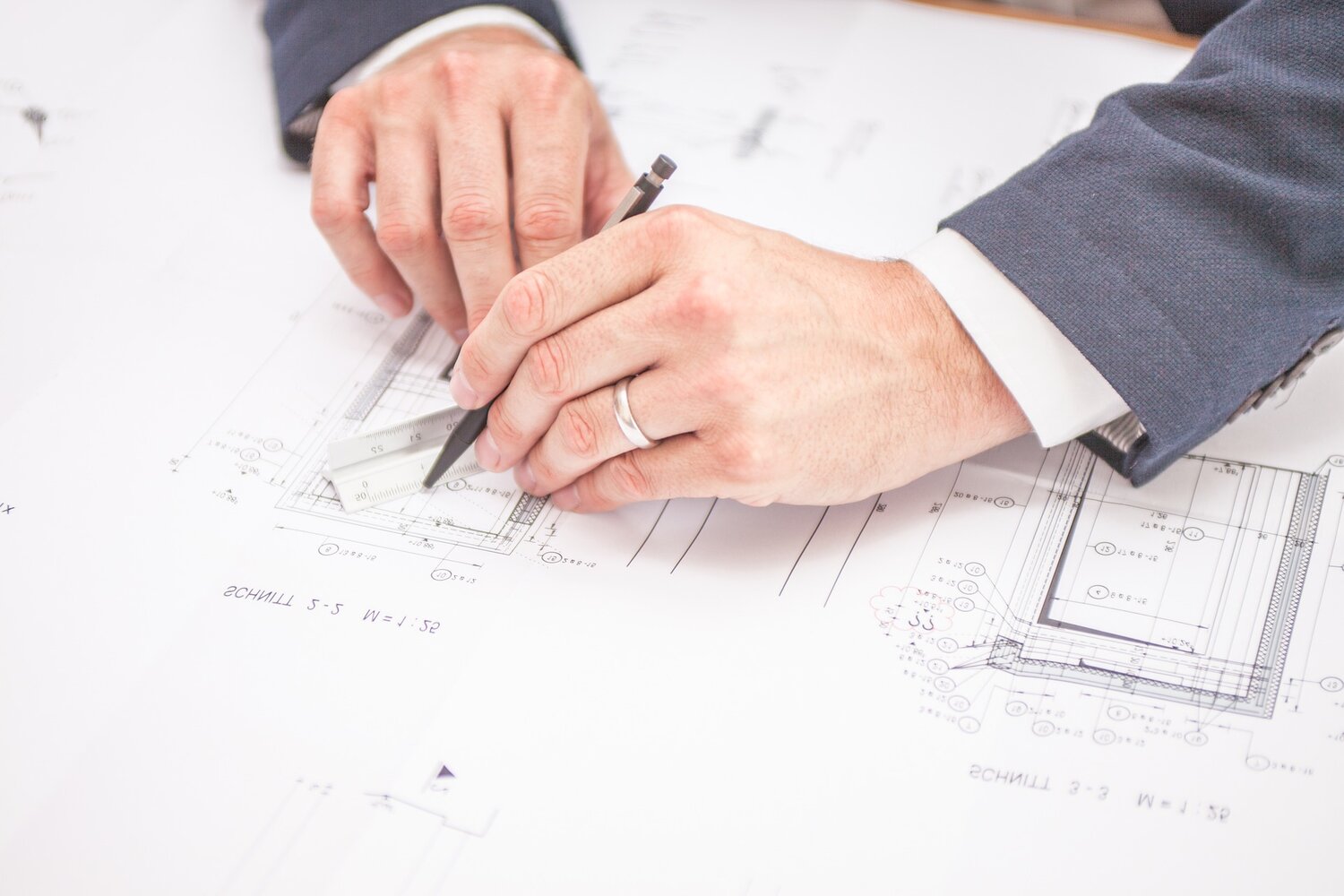
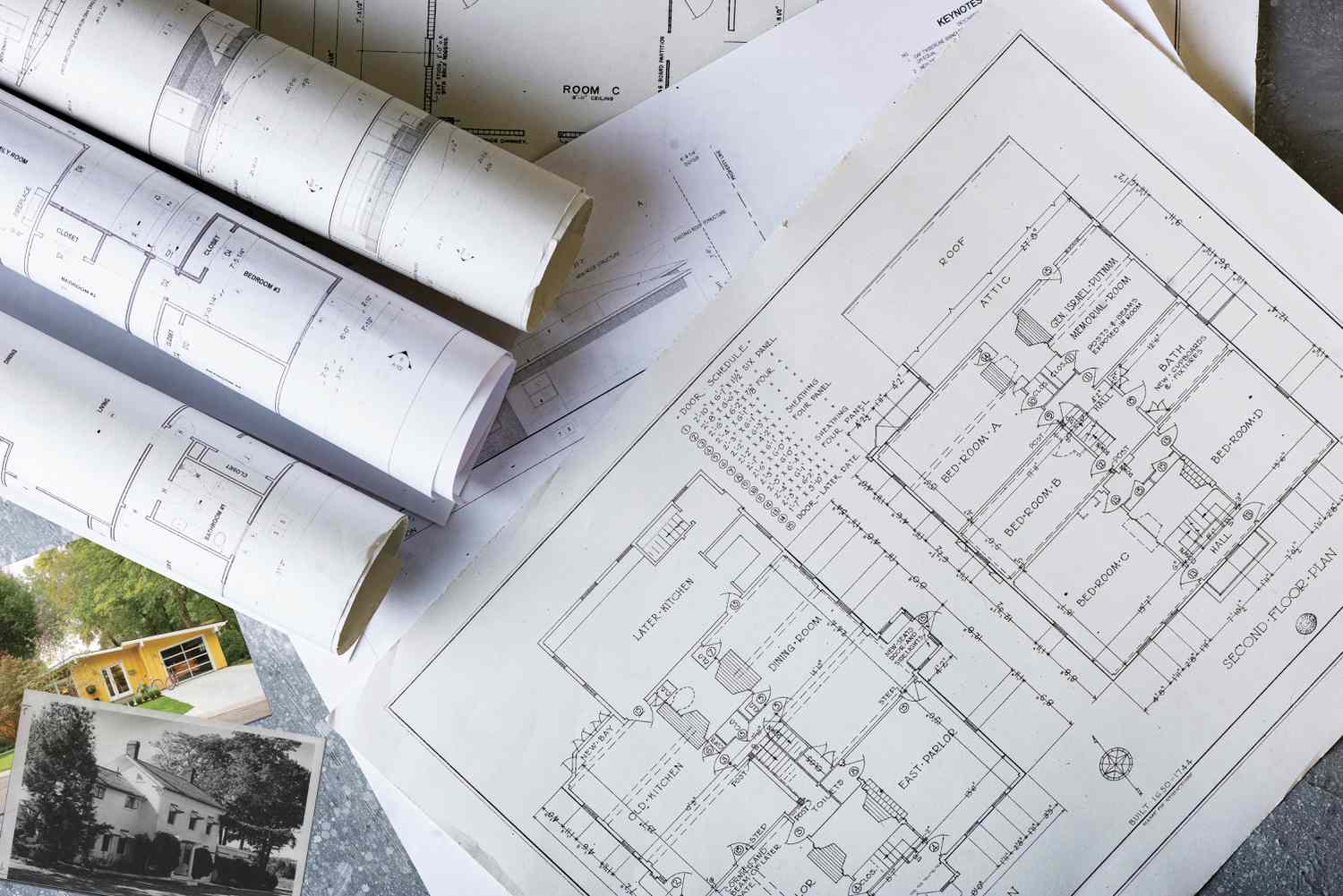




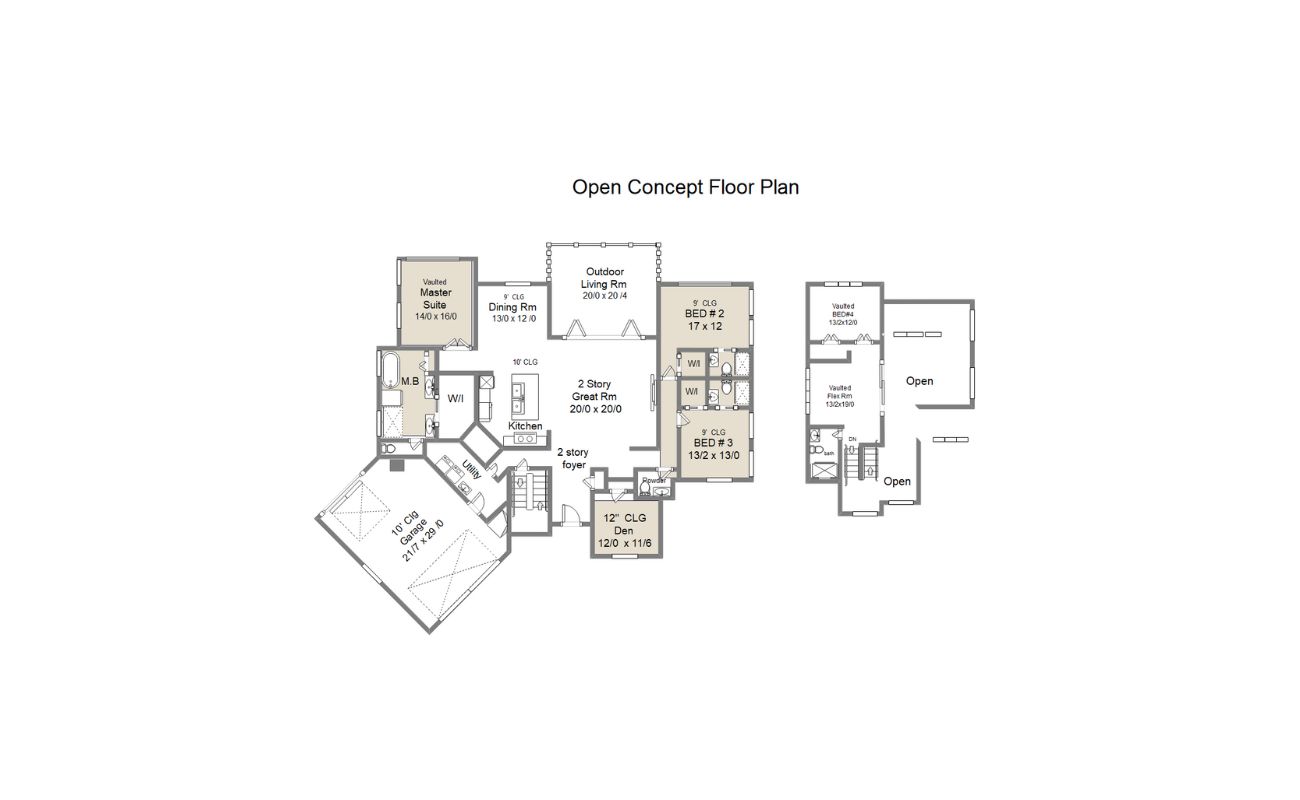

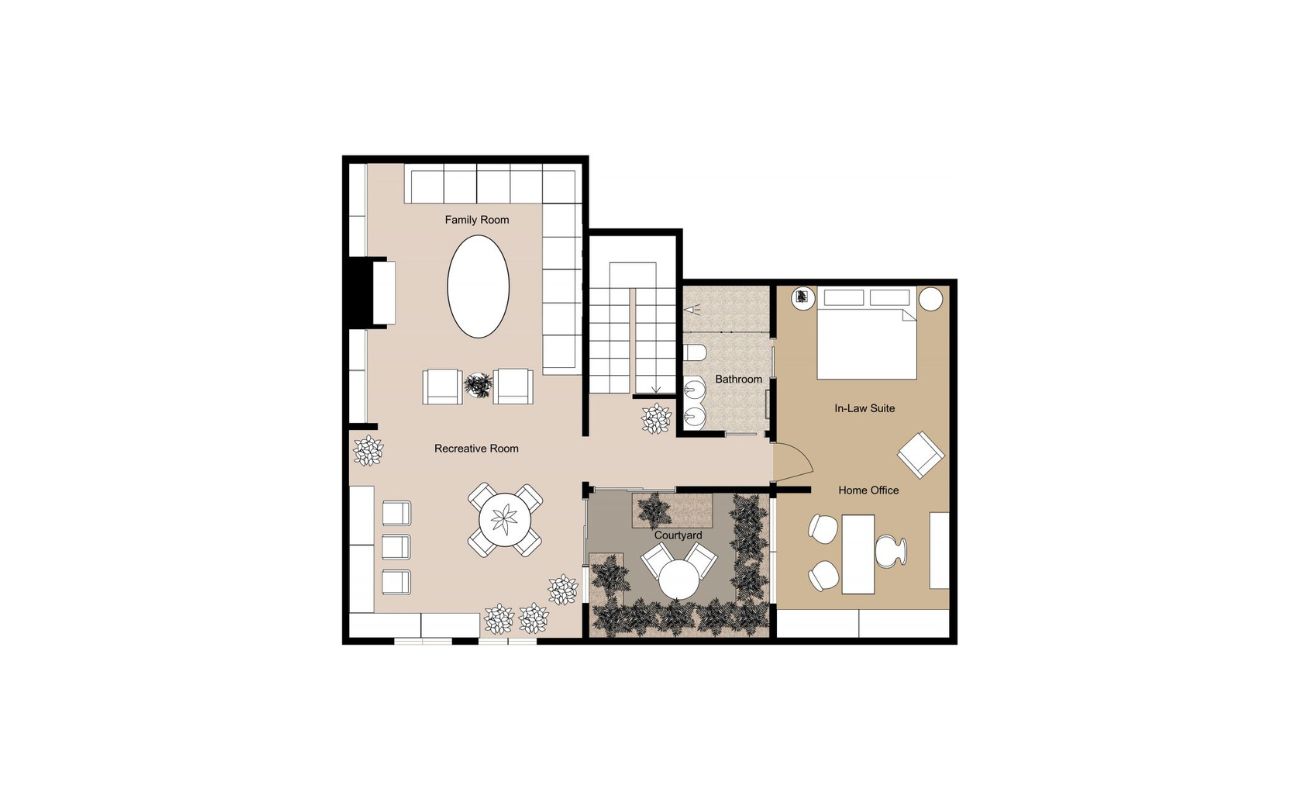
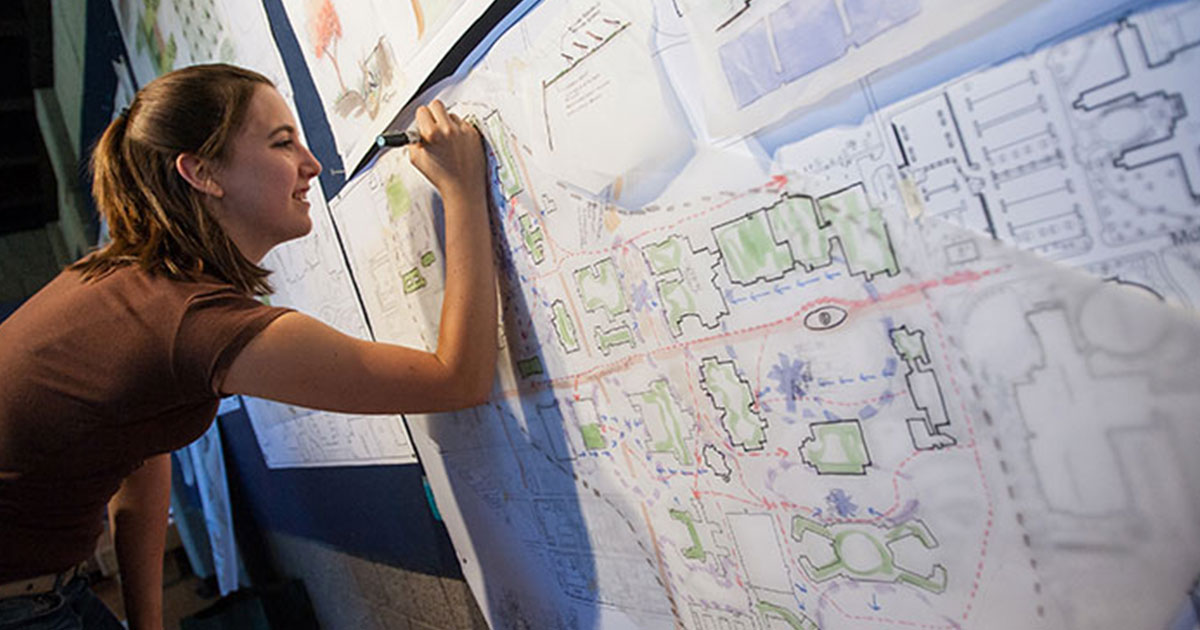

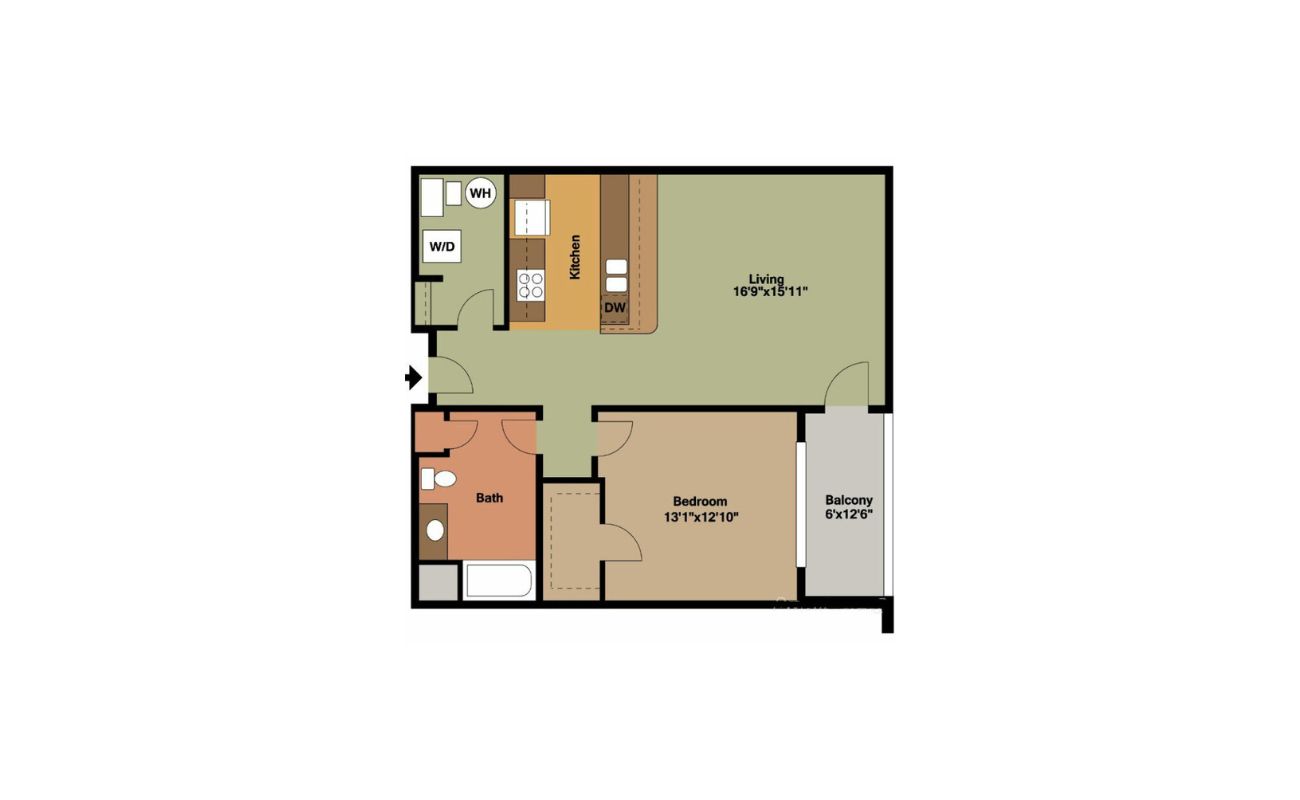

0 thoughts on “What Is Planning In Construction”